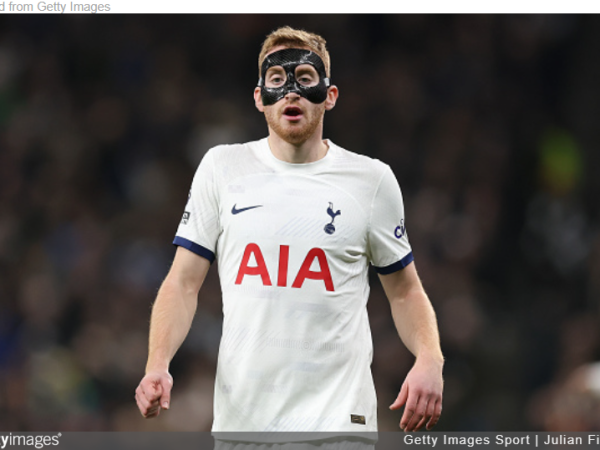With 23 matches gone, Manchester City are evident favourites for the title. But Jurgen Klopp’s Liverpool haven’t been too far off, and still have both a game in hand and a game against City to play. The Reds have been brilliant this season, regardless of their competitors, scoring the most goals in the league and returning to their best under the return of Virgil Van Dijk, and other players restored to their normal positions. Through it all, Jurgen Klopp’s team have continued to perform to the highest standard in all the areas expected of them, from their heavy metal pressing to meticulous methods of playing out from the back. Here is our tactical analysis of Jurgen Klopp’s Liverpool in 2021-22.
SYSTEM OF PLAY: 4-3-3

Sometimes switching to a 4-2-3-1 in 2020-21 to accommodate all four of Liverpool’s pristine attackers, the Reds have played all 22 matches this season in their favoured 4-3-3 shape. Like Manchester City, Liverpool’s set-up actually rarely looks like 4-3-3, with that being a common defensive shape, rather than anything to do with how they attack.
Liverpool’s improved form from 2020-21 has come with the return of Virgil Van Dijk and Joel Matip into the team, who have excelled as two of the best centre-backs in the league once again. In Trent Alexander-Arnold and Andy Robertson, the Reds then have two of the best (and most attack-minded) fullbacks in the league to complete their back-four. Alisson Becker has comfortably nailed down the place in behind the defense, sweeping up any messes on the heels of the team’s high line. Ibrahima Konate and Kostas Tsimikas have also proven themselves useful understudies, and could be staples in the team down the road.
Embed from Getty ImagesIn midfield, Jordan Henderson and Fabinho have also been able to return to their preferred places, with Liverpool’s third midfield man more open for debate. Naby Keita, Thiago, James Milner and Alex Oxlade-Camberlain have all had their moments to shine, with the former Arsenal man accumulating the most minutes out of those four so far.
At the front end of the pitch, Liverpool’s illustrious front three of seasons past has officially been disrupted by the form of Diogo Jota – the second highest scorer in the Premier League this season. The Portuguese playmaker excellently plays as the false nine in the team, allowing league top scorer Mohamed Salah and the effervescent Sadio Mane to race in behind. Liverpool have scored more goals, with more expected goals, than any other team in the league (including Man City). The front three have been a massive part of that, contributing 58% of the team’s 58 goals this season. Impressively, the man closest to breaking into that unit in Roberto Firmino actually has the highest goals per shot (0.27) ratio of all four. While Jota seems to have stolen his place away, Firmino is still a massively important player capable of providing Liverpool a different set of skills in attack.
Embed from Getty ImagesWithin Liverpool’s 4-3-3, the emphasis is always on the attacking side of the game, and how to best unlock the opposition’s defense. As a result, the Reds spend most of the game in their fluctuating attacking shapes of 2-1-4-3, 3-1-6 and 2-3-5. More on that later, but it’s an important context to understanding Liverpool’s set-up under Jurgen Klopp, and how their heavy metal football properly takes form.
BUILD-UP
Embed from Getty ImagesWe’ve analyzed Liverpool’s build-up play several times in the past, and it’s safe to say not an awful lot has changed. The third central midfielder in the mix is almost always situated higher than Henderson and Fabinho in initial builds, while Trent is usually much lower than Robertson on the other side. That means the defensive midfielder usually drops to the left of Van Dijk, as Henderson takes up the middle and completes the diamond. The only major change is that we aren’t exactly seeing those diamond shapes quite as much this season, with Van Dijk holding a more important role on the ball again, and Fabinho often situated in front. A 2-5-3 shape where Fabinho sits in front of the centre-backs, or a 3+1 combination with Trent part of the three are the most common structures, as the team circulates the ball left to right. James Milner will also often become part of the build-up three when he’s in the team, dropping to the left of Van Dijk, as Henderson and Trent push higher. This kind of versatility in structure and shape is also extended to Liverpool’s versatility in passing range. They can hit quick long passes into advanced runners when you’re least expecting it, and Alisson may also go long himself when feeling under threat of the pressure. But the calmness in possession that they exude often oozes class, and Liverpool keep the ball with a finesse that is unrivalled by most in the league.
Embed from Getty ImagesWhile they have no issue building through either side, they are more likely to guide play down the right, and work close combinations between Salah, Henderson and Alexander-Arnold as soon as they can. One specific pattern that you can guarantee to see involves Henderson dropping toward Alexander-Arnold, drawing more space for Mohamed Salah in behind. Trent will then by-pass Henderson completely with a pass into space for the Egyptian, as Salah speeds down the right lane. But again, Liverpool are incredibly fluid, and they won’t just do the same pattern over and over. For example, if the Liverpool fullback is higher up the pitch to start, Andy Robertson might drop back on the other side, and allow the Reds to build up down the other side.
Embed from Getty ImagesThrough these moves, Liverpool are often working the wide areas and looking for forward passes into their front-line from out to in. But they’re also incredibly adept at switching play, and if one Liverpool fullback has the ball around halfway, you can often expect a switch to the opposite side. Fabinho, Henderson and the two centre-backs are useful weapons to switch play and spray diagonal or lateral passes, while Thiago, as we discussed rather harshly last season, often does so more to the detriment of the team than to the benefit. Thiago can often slow everything down a bit too much rather than spraying those progressive long passes he is so remarkably capable of achieving. But for the most part, Liverpool’s speed of play out from the back is exceptional, and their one-touch passing shows no signs of weakness against an opposition’s high press.
ATTACKING PRINCIPLES
Embed from Getty ImagesFor all of Manchester City’s star power and league winning potential, Liverpool are the most potent and productive attacking side in the league at this time. The Reds have created 97 goal-creating-actions in 22 matches so far, which is 16 more than second place Chelsea (81) and 18 more than City (79). They also lead the league in goals (58), expected goals (54.1), and shots on target per 90 (6.36). All of this is unsurprising, given the immense talent of scorers like Salah, Jota, and Mane, backed up by exceptional creators in the form of fullbacks Andy Robertson and Trent Alexander-Arnold.

With so many attack-minded stars, it’s no wonder why Liverpool attack with fluctuating shapes of 2-1-4-3, 2-3-5 and 3-1-6. The 2-1-4-3 is common as Liverpool circulate the ball around in the attacking half, with Fabinho taking up high positions in central attacking areas. The high-line then takes centre stage with everyone in the attacking half, as the outside central midfielders and fullbacks create space in behind the narrow front-three. In other moments, a player like Trent may be lower and part of a three, adding a different long passing dimension.
Embed from Getty ImagesDuring Liverpool’s progression and creation, width continues to take centre-stage, as the Reds emphasize wide attacks. The wingers often narrow into the half-spaces, with outside central midfielders and fullbacks floating in and out of wide areas – interchanging with one another. Overlapping and underlapping runs then take place up and down the by-line, with Robertson in particular getting around the left-central-midfielder to whip deliveries into the box, or drive forward himself. On the other side, Trent Alexander-Arnold has been inverting in central areas more and more as a Man City styled inverted fullback. That means Henderson often positions himself as the widest player down the right, or takes up high positions in central areas as Salah shifts wide instead. With this kind of positional rotation and fluidity, opposition defenders are often dragged out of position, where the incredible space interpreting becomes a NASA expedition, and Liverpool players exploit the gaps to break forward at speed.

With a false nine in the team, Liverpool also have another mechanism to exploit the wide areas. Diogo Jota or Roberto Firmino dropping into central areas to pick up possession allows Salah to float centrally as the striker, which naturally opens up more space down the right. Naby Keita expertly exploited that space in a 5-0 win over Ole Gunnar Solskjaer’s Manchester United in October, and Trent Alexander-Arnold also frequently takes advantage. The same strategy can also work to great effect on the left, with Sadio Mane and Diogo Jota often interchanging position to pull players out of the equation. This means that even in longer spells where the opposition have plenty of time to set-up, it’s still incredibly difficult to stop Klopp’s team. The narrowness of the front three in the creation stage, as they look to roam around and combine, narrows the opposition’s defense even more and allows space for the likes of Henderson, Trent and Robertson to get down the wings and deliver crosses. Then you have a player like Mohamed Salah, who can find his way out of danger even when quadruple teamed. Opposition players are incredibly afraid to touch him (especially given his history of embellishing contact), but they also know they can’t let him go untouched. That presents a dilemma that no defender seems to be able to solve, and Salah has walked his way to 16 goals and 9 assists in 20 matches this season.
But it’s not only the positional play and rotation that disrupts an opposition’s block. It’s also Liverpool’s incredible ability from transitions and set-pieces. When transitioning to attack, the Reds race forward at remarkable speeds, with dribbling power and intelligent vertical running from every direction. The exceptional long passing range of players like Trent and Van Dijk only aids in the process, putting things on a plate for some of the fastest and deadliest attacking weapons in the league like Mane and Salah. Many of the goals that Jota or Firmino end up scoring are easy tap-ins, as the team quickly break forward with a long pass over the top in the half-space, and the striker getting on the end of the subsequent pass across the penalty area.
Embed from Getty ImagesQuite famously at this point, Liverpool are also exceptional when it comes to throw-in routines, thanks in part to the work of freelance coach Thomas Grønnemark. The men around the ball constantly shimmy to create space in and out, and the throw-in-taker is patient in finding the very best option at the exact right moment. It’s also noticeable how much the thrower’s eyes and torso move side to side, looking for that very best option, and looking to time the throw to perfectly match the timing of a run into space.
Embed from Getty ImagesThen you have the exceptional talent of Trent Alexander-Arnold over a dead-ball, helping the Reds score 12 goals this season from set-pieces, the most in the Premier League. Mane, Salah, Fabinho and Van Dijk have all scored 2 goals from Liverpool’s extraordinary corner and free kick routines in 2021-22, with Trent scoring another 2 directly from free kicks. Across Europe’s top five leagues, only Bundesliga underdogs Freiburg have bagged more from set-piece situations, furthering the threat that Klopp’s team pose in attack. We won’t spend long dissecting everything about Liverpool’s routines, but there are a few interesting notes. Firstly, Alexander-Arnold and Roberston will often take in-swinging set-pieces on the opposite side of the field to their position. This means that if the ball is lost, Robertson may find himself in the right fullback position, and Trent down the left, until the time is right to switch back. Secondly, Liverpool usually have between 4-6 players in the box – with Van Dijk the most likely initial target. A powerful leaper and strong header of the ball, Van Dijk can either be used to power the ball in directly, or flick on to other players making runs at the back-post.
DEFENSIVE PRINCIPLES
Embed from Getty ImagesLiverpool have become synonymous with pressing over the past few years, with Jurgen Klopp’s unique ‘gegenpressing style’ helping to revolutionize the discussions around pressing in the tactical and data analysis community, not to mention mainstream media and punditry. This is not unwarranted, as the Reds have the most successful press in the league (32.6%), and the most pressures in the attacking third (43.0 per 90).
Liverpool press in their 4-3-3 or an adapted 4-1-4-1 shape, which can often also resemble their 2-1-4-3 attacking set-up, with central midfielders and fullbacks starting high. They don’t just press successfully, but intelligently. It’s not all out, heavy metal pressing, but calculated. It can also involve interchanges to match their attacking rotations, with Salah sometimes kick-starting presses high up the pitch in the central role and Jota shifting wide. The secret sauce to their success is in their counter-pressing (also known as gegenpressing), where several Liverpool men will instantly race in to disrupt the opposition and stop the first player in possession from being able to get their head up. The closest to the situation, or sometimes even the Liverpool man who gave the ball away, lead that process. The diamond shapes that follow are usually immediate and compact, making it difficult for the opposition to counter. The high line massively aids in that approach, as it condenses space and positions more players around the situation to stop direct, long passes over the top – how opposition clubs often try to exploit Liverpool. Compounding matters, Van Dijk, Konate and Matip are all exceptional in the air (each winning over 70% of their aerial duels), and the fullbacks possess magnificent recovery speed if the centre-backs get beat.

Lower on the pitch, Liverpool’s 4-3-3 can become a 4-1-4-1, as Fabinho screens the opposition’s striker. The forwards are quick to come back and help the team defend, sometimes narrowing into 4-3-2-1 esque shapes. Their shape may revert even further into a 4-5-1 in their low-block, with Jota buzzing and probing as the most advanced player – constantly applying pressure. All three central midfielders may get in the box to help strop crosses, and follow late arriving midfield runners, and Grønnemark has also made an evident impact in Liverpool’s defensive set-up from throw-ins. The Reds overload wide areas in compact diamonds to stop short, forward throws, and then press immediately upon successful first contacts. Klopp’s men have only conceded 4 goals from set-pieces this season, the joint-fifth lowest in the league, which again is a testament to their aerial strength and ability.
Embed from Getty ImagesIf opposition teams do find a way through, such as by targeting the space in between Trent and his right-centre-back partner, another nerve-racking factor can sometimes take over. The sort of “I can’t believe I’m in this good of a position against Liverpool!” thought creeps into mind as players are given too much time in front of goal, and then they miss. Take the match against Chelsea for example, where Christian Pulisic was far too cavalier in front of goal when alone with Kelleher. Mane at the other end of the pitch had a near identical chance to round Edouard Mendy, and exuded poise and precision as his heavy touch took it past his compatriot, and then found the back of the net. It’s a difference in quality, but it’s also a difference in confidence and belief – kickstarted by the sheer status and size of the players they have at their disposal. With Alisson and Van Dijk in constant communication to organize everything at the back, Liverpool boast the fourth best defensive record in the league this season, with just 19 goals conceded in 22 matches.
CONCLUSION
Embed from Getty ImagesWith 23 matches gone, Manchester City are evident favourites for the title. But Liverpool haven’t been too far off, and still have both a game in hand and a game against City to play. The Reds have been brilliant this season, regardless of their competitors, scoring the most goals in the league and putting together some of their best spells of positional play and rotation. Mohamed Salah leads the league in combined goals and assists, Trent leads the league in chances created and assists, and Jota places second behind Salah for goals at this stage in the competition. Klopp’s men simply can’t be stopped going forward, and defensively, they’re more than resolute and solid. Even if the Premier League might be out of reach, Jurgen Klopp could still lead this crop of players to more title or tournament glory in 2021-22 – before their star men climb over their peak and need replacing.
So there it is! A tactical analysis of Jurgen Klopp’s Liverpool in 2021-22. Be sure to check out more of our tactical analyses, including more on Liverpool listed below. Thanks for reading and see you soon!
You might also enjoy…
-> Jurgen Klopp – Liverpool – Tactical Analysis (2020-21 Edition)
-> Where Liverpool Went Wrong in 2020-21 – Tactical Analysis
-> How To Beat Liverpool – West Ham United 3-2 Liverpool – Tactical Analysis
+ Our scouting series…
-> Finding the next Sadio Mane – Tactical Analysis
-> Finding the next Mohamed Salah – Tactical Analysis
-> Finding the next Roberto Firmino – Tactical Analysis
Why centre-backs are becoming fullbacks: The tactical trend that defined 2023
It might be wrong to credit this tactical approach to Pep Guardiola. After all, the origin story to the ‘fullback’ is because the defender was fully back. However, in operating with a centre-back that steps up into midfield, Guardiola also created a construction within his team that regularly positioned centre-backs out wide. From then on,…
Unai Emery – Aston Villa – Tactical Analysis (2023-24 Edition)
Just shy of the halfway mark inside the 2023-24 Premier League campaign, Unai Emery’s Aston Villa have been the surprise package. In with a real shot of the top four, Emery’s Villa are even within touching distance of the Premier League title chase, currently sitting a single point behind Arsenal in the lead. With that,…
Game of Numbers #36 – Role Changes for Dejan Kulusevski & Konrad Laimer
One thing is for certain. Spurs have not been the same since injury to James Maddison. Spurs were flying high with no signs of slowing down at the start of the season. But injuries across the squad have since stunted their progress and made for a more difficult second half of the first half to…





15 thoughts on “Jurgen Klopp – Liverpool – Tactical Analysis (2021-22 Edition)”